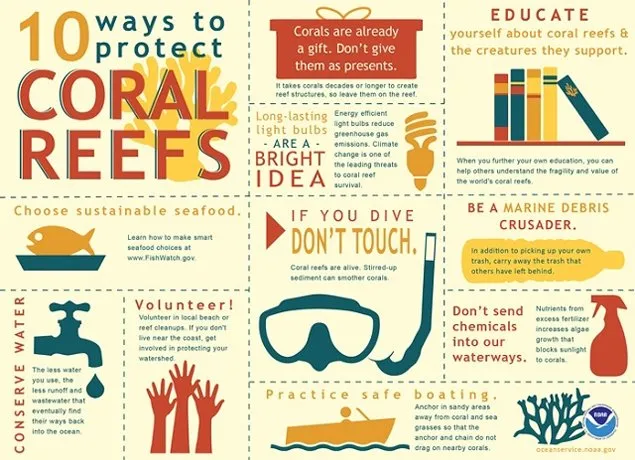NOAA has published "How to Protect Coral "

The sea and coral may be getting a brief rest. But if you really want to save the coral, it necessary for us to work harder.
The whitening phenomenon of coral reefs due to global warming, which was discovered all over the world since the beginning of 2015. The American Oceanic and Atmospheric Administration (NOAA) announced that this global whitening phenomenon is finally about to end. However, the water temperature around the coral seems to be still high.
Coral reefs living in tropical and temperate water mainly near the equator have suffered for nearly three years for the large-scale bleaching phenomenon caused by global warming. Coral is an organism that coexists with vivid algae called brown worms algae and absorbs food and releases the cinnamon alga which photosynthesis is performed just by raising the water temperature only a few degrees. Since coral bait is supplied from the zooxanthella, when released, the coral becomes white like a ghost, eventually starving to death.
This phenomenon occurred all over the world since the beginning of 2015 when NOAA declared the third largest bleaching phenomenon in history. From then on, we have seen witnessing the death of many corals in the Great Barrier Reef in Australia, Florida in America, Hawaii and the South Pacific. Last year, the " Barrier Reef Death " written as a satire was overwhelmed abroad, but despite emphasizing the actual misery, a lot of people thought this article was true It was.
Several were suffering from severe weather which had been too hot for nearly three years due to severe El Niño phenomenon, and partly due to weather fluctuations, but at last, the corals of the world seem to have a breath. Because the latest version of heat stress on NOAA's coral reef bleaching phenomena using satellite and meteorological water temperature data from the ocean shows that there are three major aspects of the Atlantic, Pacific and Indian Oceans It is said that the water temperature in the basin has fallen to a point where it is unlikely to become a global whitening phenomenon.
In order to make sure that the bleaching phenomenon has ended properly, scientists continue to observe the water temperature for the next few months.
But that does not mean that everything has suddenly improved suddenly. As indicated by the recent whitening phenomenon, corals supporting 25% of the total marine life, in general, are also very sensitive to minor changes in water temperature. And as long as humans continue to emit billions of tons of carbon dioxide each year to the atmosphere, the temperature will rise. In this world where global warming progresses, the whitening phenomenon is expected to become more frequent and severe, and as the whitening phenomenon continues, the time to recover from coral reefs is likely to be shortened. In addition, according to NOAA, certain coral reefs in Hawaii and the Caribbean Sea continue to be exposed to the crisis of whitening this summer.
Mark Eakin, head of NOAA 's coral surveillance, told that "I hope that many corals will be able to recover before the next whitening occurs". Even if there is no El Niño weather pattern that causes the accumulation of mild sea water throughout the tropical Pacific Ocean, "Is the problem that 2017 is heading towards the second hottest year in history"?
Mr. Eakins further said, "Although it is not tropical now, warmth is absorbed by the upper ocean and there is no place to escape," he says, "So it will not take much until coral is pushed again to the limits"
